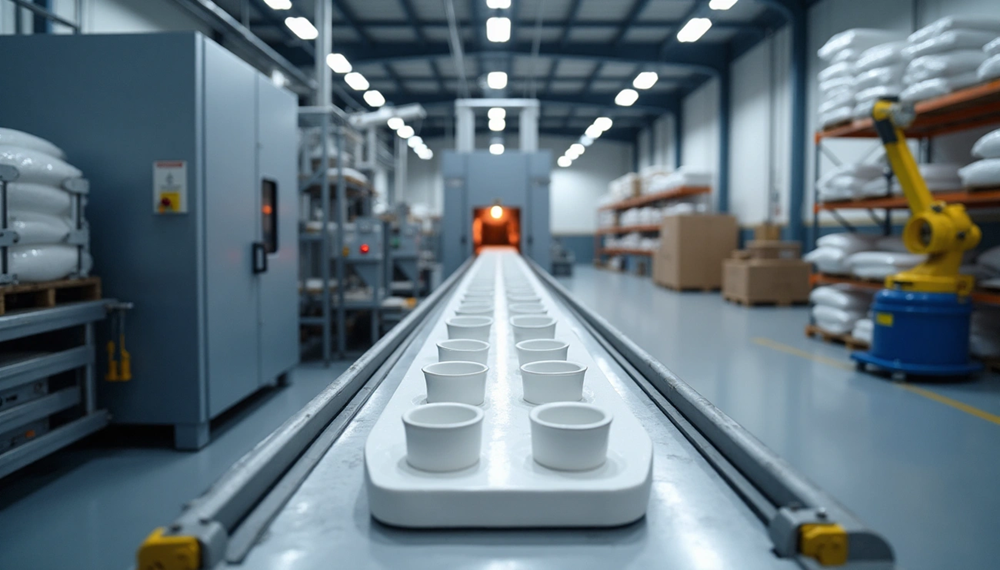
The world produces over a billion ceramic capacitors daily. Ceramic manufacturing includes materials used extensively in medicine, aerospace, electronics, and mining operations. Manufacturing costs and lead times remain the biggest problems for producers, with timelines ranging from one week to more than 20 weeks.
Ceramic manufacturing requires a complex process that needs twelve to fourteen different steps. A ceramic project’s prototype phase can last 6-12 months before reaching full production quantities. Technical ceramics, also called fine ceramics or engineered ceramics, need specialized processing to create products with exceptional density and hardness. These materials resist heat effectively. You can classify them based on their electrical, magnetic, optical, and biological applications.
This piece shows you practical ways to cut ceramic manufacturing costs by up to 40% while you retain control over product quality. Manufacturers can optimize their operations by simplifying designs, selecting better processes, optimizing tools, and planning production throughout the ceramic lifecycle.
Design Simplification for Cost-Effective Ceramic Production
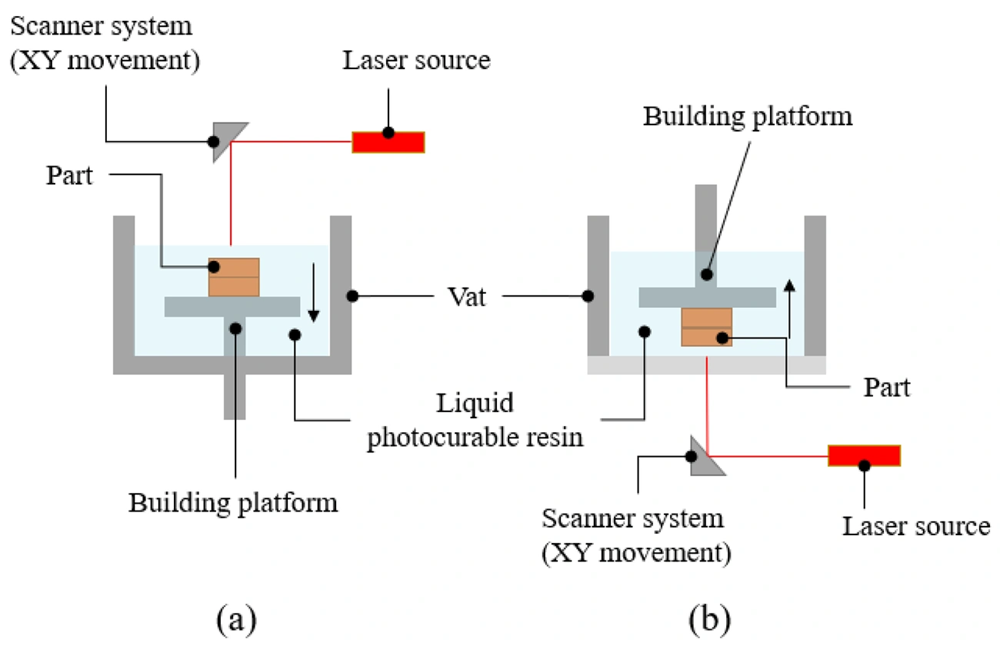
Design simplification is one of the most effective ways to reduce ceramic manufacturing costs. Smart design choices at the start can lower expenses throughout the manufacturing cycle.
Avoiding sharp edges and thin sections in part geometry
Sharp edges and corners in ceramic parts create stress points that increase cracking and breakage risks during production and use. Design engineers should add a minimum 0.020″ chamfer on all edges to eliminate these risks. Sharp corners need relief through chamfers, radii, or undercuts. These changes improve durability and make manufacturing simpler.
Uniform wall thickness throughout the component plays a vital role. Stress concentrations occur when thickness varies, especially when holes sit off-center. Thin sections densify faster than thick ones during firing. This can cause warpage or grain growth that weakens the component. These thin sections chip more easily during handling and processing.
Relaxing tolerances to reduce tooling and machining costs
Tight tolerances drive up ceramic production costs. Parts designed with wider tolerances (±1-3%) can often be produced “as-sintered.” This eliminates diamond grinding, one of the costliest manufacturing stages. Pressed ceramics can achieve standard tolerances of ±0.015″ per inch. Injection molding achieves even better results at ±0.005″ per inch.
Diamond-grinding machines cost about $1 million each. Complex parts sometimes need seven or eight machines to meet tight specifications. Relaxed yet functional tolerances can dramatically cut production expenses.
Using symmetrical shapes to minimize forming complexity
Symmetrical designs make ceramic manufacturing much simpler. Round parts cost less to tool compared to other shapes. Ceramic parts shrink up to 30% during sintering. This makes dimensional control very difficult with complex geometries.
Designs should avoid undercuts that need split molds because they make tooling more complex and expensive. Symmetrical forms allow materials to flow better during forming. They also shrink more evenly during firing.
These design principles help manufacturers cut ceramic production costs while maintaining product quality and performance.
Choosing the Right Ceramic Manufacturing Process
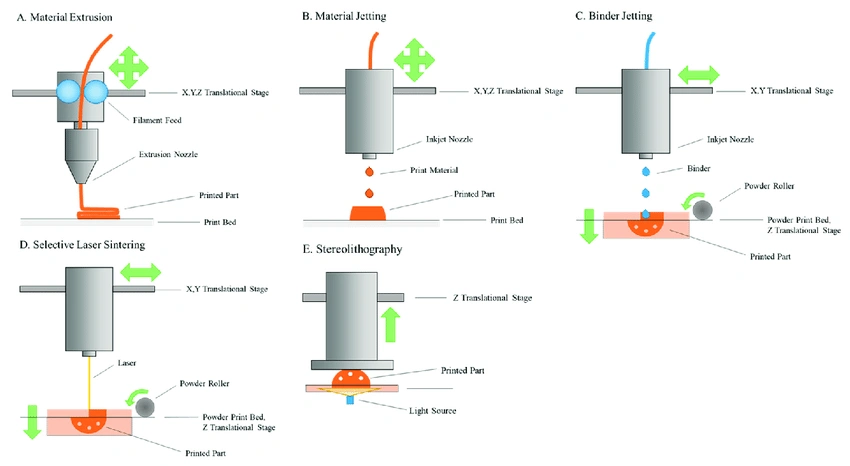
Manufacturers must balance ceramic quality with production costs when choosing the right manufacturing process. Each method brings unique advantages that need to match specific project needs.
Slip casting for low-volume, complex parts
Slip casting stands out as the best way to produce complex-shaped ceramic components with fine details. The process starts when ceramic powder disperses in a liquid carrier to create a slurry, which then goes into a porous mold. The mold absorbs the liquid while ceramic particles build up along the walls to form the desired shape. Pressure casting speeds up this process through external pressure for higher volume production. Complex geometries like ceramic nozzles, bathroom fixtures, and medical components work perfectly with slip casting. The method might take longer than others but creates components with exceptional surface quality and can handle pieces up to 50kg. The process also helps manufacture aerial fairing shells and other complex-shaped homogeneous high-quality preforms from quartz ceramics.
Dry pressing for high-volume, simple geometries
Dry pressing is the budget-friendly choice to produce simple-shaped ceramics in high volumes. The process compresses ceramic powder in a metal die under high pressure to create compact shapes that are later sintered. Tiles, plates, and simple electronic components are perfect candidates for this method. The ceramic tile industry produced about 16.8 billion square meters in 2022, mostly using dry pressing. This technique brings many benefits: quick production cycles, minimal labor needs, and finished products with high mechanical strength. The process has its limits, though – pressure distribution can be uneven and might cause inconsistent density throughout the component. The upfront tooling costs are high but spread out well over large production runs.
Additive manufacturing for prototyping and low-run parts
Additive manufacturing has become a great way to handle ceramic prototyping and custom production runs. 3D printing builds ceramic components layer by layer, unlike traditional methods. This allows complex designs without the tooling expenses of conventional techniques. The process comes with its challenges because of materials’ high melting temperatures and natural brittleness. Engineers have developed several techniques for ceramic additive manufacturing: powder-based methods like Selective Laser Melting/Sintering, vat polymerization processes such as Stereolithography, and slurry-based approaches like Direct Ink Writing. The cost might be higher than traditional methods now, but additive manufacturing excels at creating intricate geometries that would be impossible otherwise while minimizing waste.
Tooling and Material Strategy for Cost Reduction
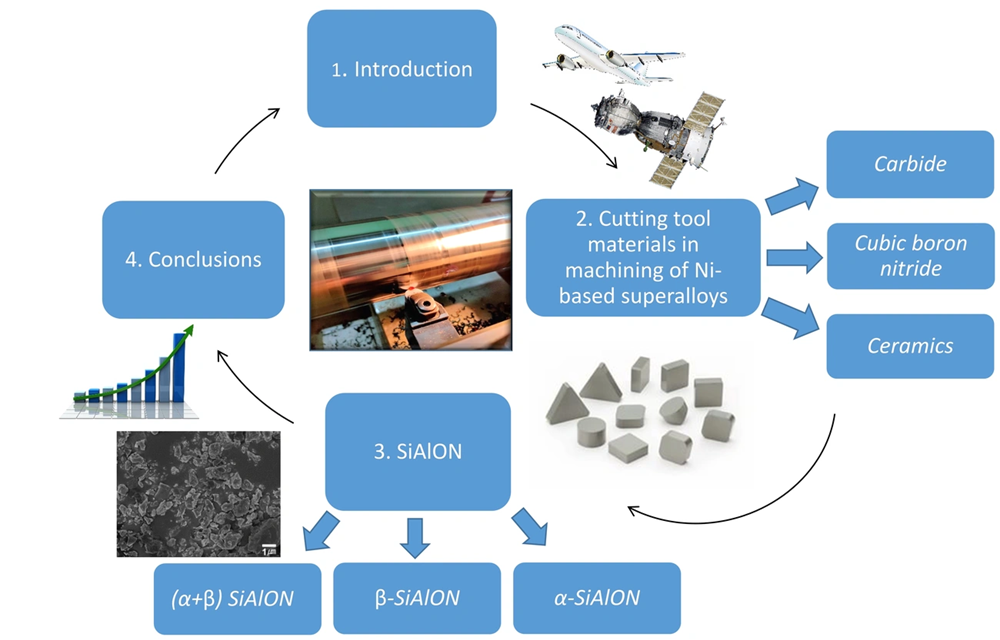
Smart choices in tooling and materials are the foundations of reducing ceramic manufacturing expenses. Companies that implement these strategies the right way can cut costs without affecting product quality.
Using machinable ceramics like Macor for prototyping
Machinable ceramics help streamline the ceramic development process. Materials like Macor, Shapal, and Boron Nitride work with standard carbide tools and don’t need post-firing. This creates a direct route to functional ceramic parts. These materials are a great way to get results in prototyping and small batch production.
Macor stays stable at temperatures up to 800°C and works best at 1,000°C. The material’s coefficient of thermal expansion matches most metals and sealing glasses well. This makes it perfect for complex technical applications. Quick modifications are possible with conventional metalworking equipment, which speeds up prototype development.
The cost benefits of machinable ceramics shine in small quantities. However, this advantage flips at higher volumes. One material supplier explains, “These materials are ideal for prototyping and small batches… But at the time you need high quantities, they can get pricey”.
Reducing lead time with modular die systems
Modular die systems are the quickest way to cut ceramic production costs. Manufacturers use configurable tooling components to avoid the largest longitudinal study times of 2-3 months that come with new die press or injection molding tools.
A ceramic manufacturer tried this approach by adapting a roller hearth kiln to run at 1290°C among their standard kiln at 1650°C. This change let them “feed part runs according to firing needs, rather than adjusting kiln temperature from job to job.” They ended up reducing order lead times to 2-4 weeks—beating competitors by 2-4 weeks.
Material substitution: alumina vs. zirconia cost analysis
The price difference between alumina and zirconia gives manufacturers a chance to optimize costs. Zirconia costs more than twice as much as premium alumina materials. There are several reasons for this big price gap:
- Raw material availability: Aluminum exists nowhere near as much as zirconium in Earth’s crust. This makes alumina’s base materials cheaper naturally.
- Processing complexity: We needed about 10 times longer to grind and shape zirconia compared to alumina because of its higher density and better wear resistance. This process uses up more diamond tools.
- Thermal requirements: Zirconia just needs higher sintering temperatures and has worse thermal shock resistance. This leads to more expensive sintering processes.
Applications that work with both materials can benefit from using alumina instead of zirconia. This switch creates big cost savings and often maintains performance in non-critical areas.
Production Planning and Lead Time Optimization
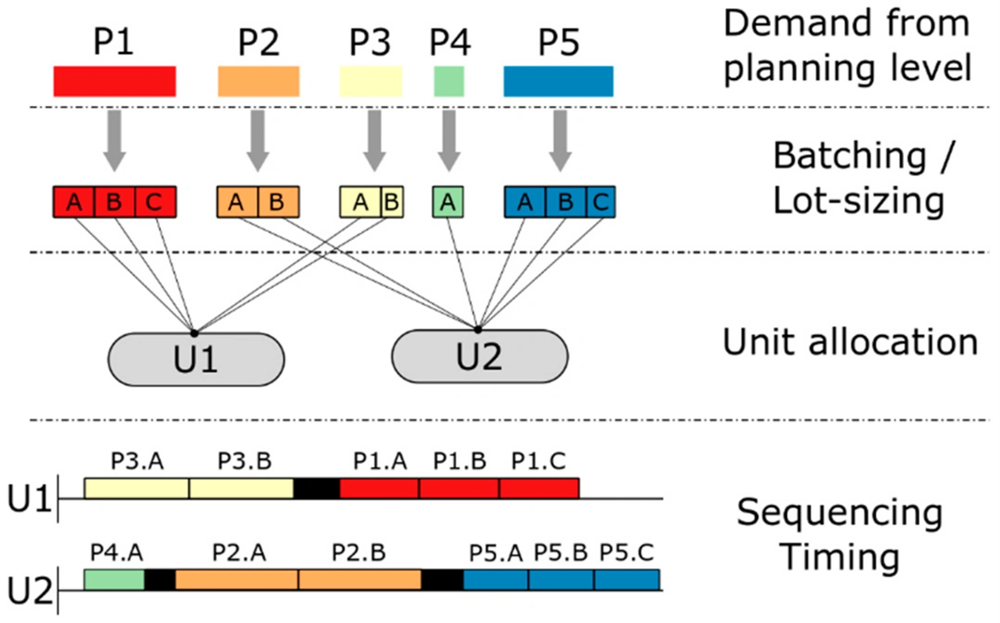
Production planning plays a key role in cutting ceramic manufacturing costs. Ceramic firing needs kilns to run non-stop because shutting them down and restarting gets pricey. This makes scheduling a crucial part of the process.
Batch scheduling to reduce idle kiln time
The ceramic firing process in roller or tunnel kilns sets the pace for the entire production system. AI-powered reinforcement learning helps create better batch schedules that cut down idle kiln time without affecting product quality. These systems learn the best production order and batch sizes to save time and money. Teams can boost processor use by grouping similar jobs, since processing time depends on the product family more than batch size. Ceramic makers also use “drop and soak” firing schedules. This method heats up materials faster then keeps temperatures steady to save energy while protecting product quality.
Minimizing changeovers in multi-product lines
Changeover time affects manufacturing efficiency by a lot through downtime, adjustments, and testing. Manufacturers can cut unnecessary steps and make setups simpler by looking at their current procedures. The Single-Minute Exchange of Die (SMED) system cuts changeover times by splitting tasks into two groups: ones that can happen while equipment runs (external) and ones that need equipment to stop (internal). Workers who know multiple tasks or can fix common problems help reduce changeover downtime. Regular maintenance also helps avoid unexpected breakdowns that make product changeovers take longer.
Forecasting demand to avoid overproduction
Overproduction wastes resources in ceramic manufacturing and leads to extra inventory, storage costs, and cash flow problems. AI forecasting works better than old methods at predicting demand. These AI systems look at past sales and market factors to help make production decisions. Ceramic makers have cut their inventory by up to 30% after using AI forecasting. These systems work with existing ERP software to create detailed production schedules based on machine capacity, available workers, and materials. This helps companies adjust their production plans right away when market conditions change.
Conclusion
Ceramic manufacturing comes with many challenges because of its complex multi-step processes and long lead times. The good news is that manufacturers can cut costs by a lot through smart changes in several operational areas. A well-laid-out design is the foundation of affordable production, especially when you have manufacturers who remove sharp edges, keep wall thickness uniform, and use symmetrical shapes where they can.
The right process selection helps manage costs just as much. Slip casting works best for complex, low-volume components, while dry pressing becomes more economical for simpler, high-volume production. Additive manufacturing is a chance to create prototypes, though it might get pricey per unit.
Your choice of materials can affect the overall costs considerably. Using alumina instead of zirconia where suitable can cut material costs in half. On top of that, machinable ceramics give you great prototyping options without special equipment. Manufacturers who use modular die systems also cut down lead times and tooling expenses.
Smart production planning opens up more ways to optimize costs. Companies that nail their batch scheduling waste less kiln time, and those that minimize changeovers make production more efficient. Better demand forecasting helps manufacturers avoid making too much product and racking up unnecessary inventory costs.
These cost-cutting strategies need careful planning rather than random implementation. Companies should review their production needs, market demands, and available resources to find the most beneficial approaches. Successful ceramic manufacturers usually mix and match multiple strategies that fit their specific operations.
While ceramic manufacturing stays complex by nature, these targeted cost-reduction methods create clear paths to better profits without losing product quality. Companies that apply these principles smartly can gain a real edge in markets where price matters more and more.
Key Takeaways
Ceramic manufacturers can achieve significant cost reductions through strategic design choices, process optimization, and smart production planning that maintain quality while improving profitability.
• Simplify designs early: Eliminate sharp edges, maintain uniform wall thickness, and use symmetrical shapes to reduce tooling costs and manufacturing complexity by up to 40%.
• Match process to volume: Use slip casting for complex low-volume parts, dry pressing for high-volume simple geometries, and additive manufacturing for prototyping.
• Optimize material choices: Substitute alumina for zirconia where possible to cut material costs in half, and use machinable ceramics like Macor for rapid prototyping.
• Streamline production planning: Implement batch scheduling to minimize idle kiln time, reduce changeovers between product lines, and use AI forecasting to prevent costly overproduction.
• Relax tolerances strategically: Design with ±1-3% tolerances to eliminate expensive diamond grinding operations, as each grinding machine costs approximately $1 million.
The most successful manufacturers combine multiple strategies tailored to their specific operational needs, creating sustainable competitive advantages in price-sensitive ceramic markets.
FAQs
Q1. What are some key strategies to reduce ceramic manufacturing costs? Some key strategies include simplifying product designs, choosing the right manufacturing process for your production volume, optimizing material choices, implementing efficient production planning, and strategically relaxing tolerances where possible.
Q2. How can design simplification help cut costs in ceramic manufacturing? Design simplification can significantly reduce costs by avoiding sharp edges and thin sections, maintaining uniform wall thickness, and using symmetrical shapes. These changes can decrease tooling expenses and manufacturing complexity by up to 40%.
Q3. What are the best manufacturing processes for different production volumes? For low-volume, complex parts, slip casting is ideal. Dry pressing is most economical for high-volume, simple geometries. Additive manufacturing is best suited for prototyping and low-run, complex parts.
Q4. How can material choices impact ceramic manufacturing costs? Choosing the right materials can greatly affect costs. For instance, substituting alumina for zirconia where appropriate can cut material costs by half. Using machinable ceramics like Macor for prototyping can also reduce expenses in the development phase.
Q5. What role does production planning play in cost reduction? Efficient production planning is crucial for cost reduction. This includes optimizing batch scheduling to minimize idle kiln time, reducing changeovers in multi-product lines, and using advanced forecasting techniques to avoid overproduction and excess inventory costs.
